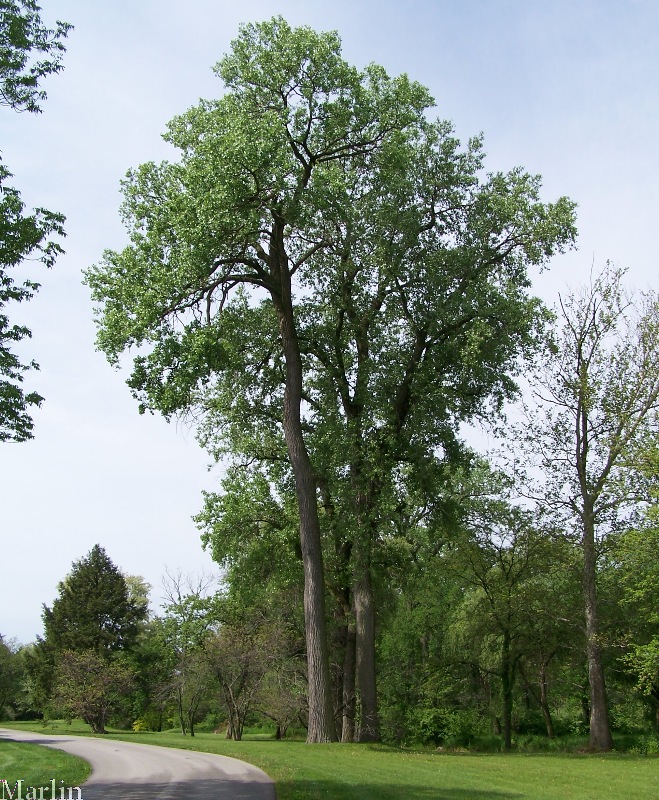Cotton Wood Tree Biography
Cottonwoods can be either male or female. It is the fluffy white seeds produced by the females during early summer that give the tree its name. [Cotton for clothing comes from the true cotton plant (Gossypium sp.), not the cottonwood tree.] The seeds are very small, 1mm wide by 4 mm long, which is quite remarkable considering that they can become one of the largest trees in North America, up to 100 ft. high with massive trunks over 5 ft. in diameter.
Trees had to survive prairie fires in order to live on the Great Plains. Cottonwoods did this by typically growing on the edges of rivers and streams and by developing a very thick, corky bark upon maturity. As their seeds are dispersed by the wind, many end up landing on the surface of water and are then stranded along the waterline on sandbars, islands and river banks. If the river level does not fluctuate too much, allowing the seed to establish itself, a new monarch of the plains will begin its life. As the water level drops with late summer droughts, one can often walk along a sandbar and see a row of these newly sprouted cottonwoods at the former waterline.
Cottonwoods can live to be over 100 years old. There are cottonwoods on the Great Plains today that were living when the great herds of bison still roamed the prairie.
Cottonwoods are related to poplars and aspens, with which they share the same shaking, shimmering leaves.
Cottonwoods can be either male or female. It is the fluffy white seeds produced by the females during early summer that give the tree its name. [Cotton for clothing comes from the true cotton plant (Gossypium sp.), not the cottonwood tree.] The seeds are very small, 1mm wide by 4 mm long, which is quite remarkable considering that they can become one of the largest trees in North America, up to 100 ft. high with massive trunks over 5 ft. in diameter.
Trees had to survive prairie fires in order to live on the Great Plains. Cottonwoods did this by typically growing on the edges of rivers and streams and by developing a very thick, corky bark upon maturity. As their seeds are dispersed by the wind, many end up landing on the surface of water and are then stranded along the waterline on sandbars, islands and river banks. If the river level does not fluctuate too much, allowing the seed to establish itself, a new monarch of the plains will begin its life. As the water level drops with late summer droughts, one can often walk along a sandbar and see a row of these newly sprouted cottonwoods at the former waterline.
Cottonwoods can live to be over 100 years old. There are cottonwoods on the Great Plains today that were living when the great herds of bison still roamed the prairie.
Cottonwoods are related to poplars and aspens, with which they share the same shaking, shimmering leaves.
Cotton Wood Tree
Cotton Wood Tree
Cotton Wood Tree
Cotton Wood Tree
Cotton Wood Tree
Cotton Wood Tree
Cotton Wood Tree
Cotton Wood Tree
Cotton Wood Trees Per Skeeter
Marty Robbins - Cottonwood Tree








No comments:
Post a Comment